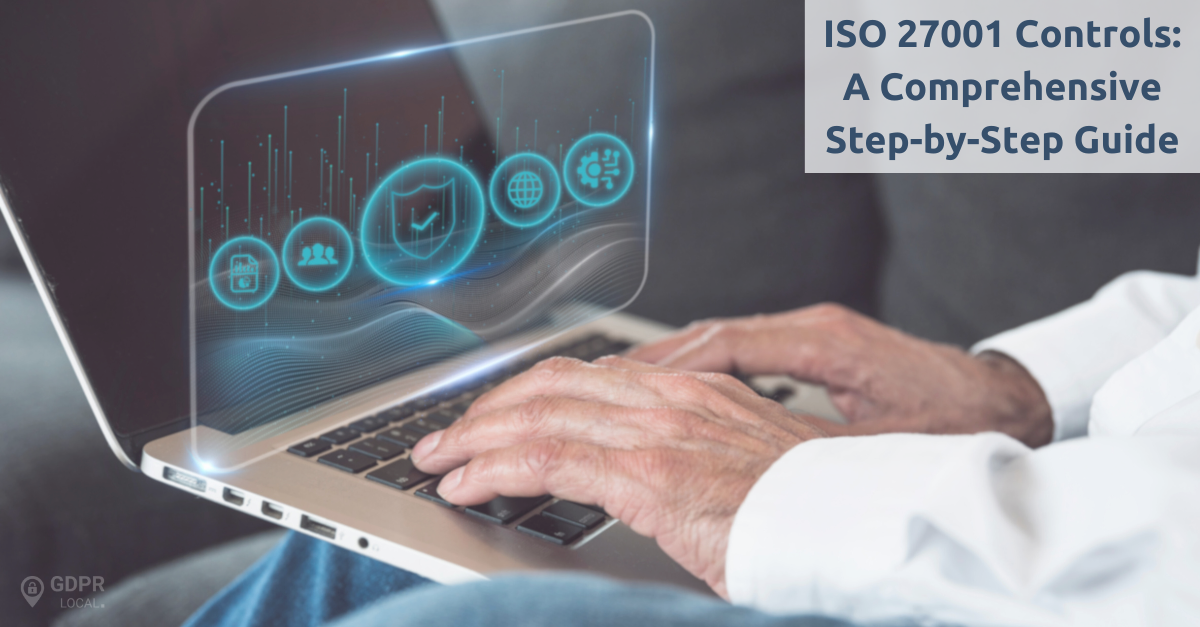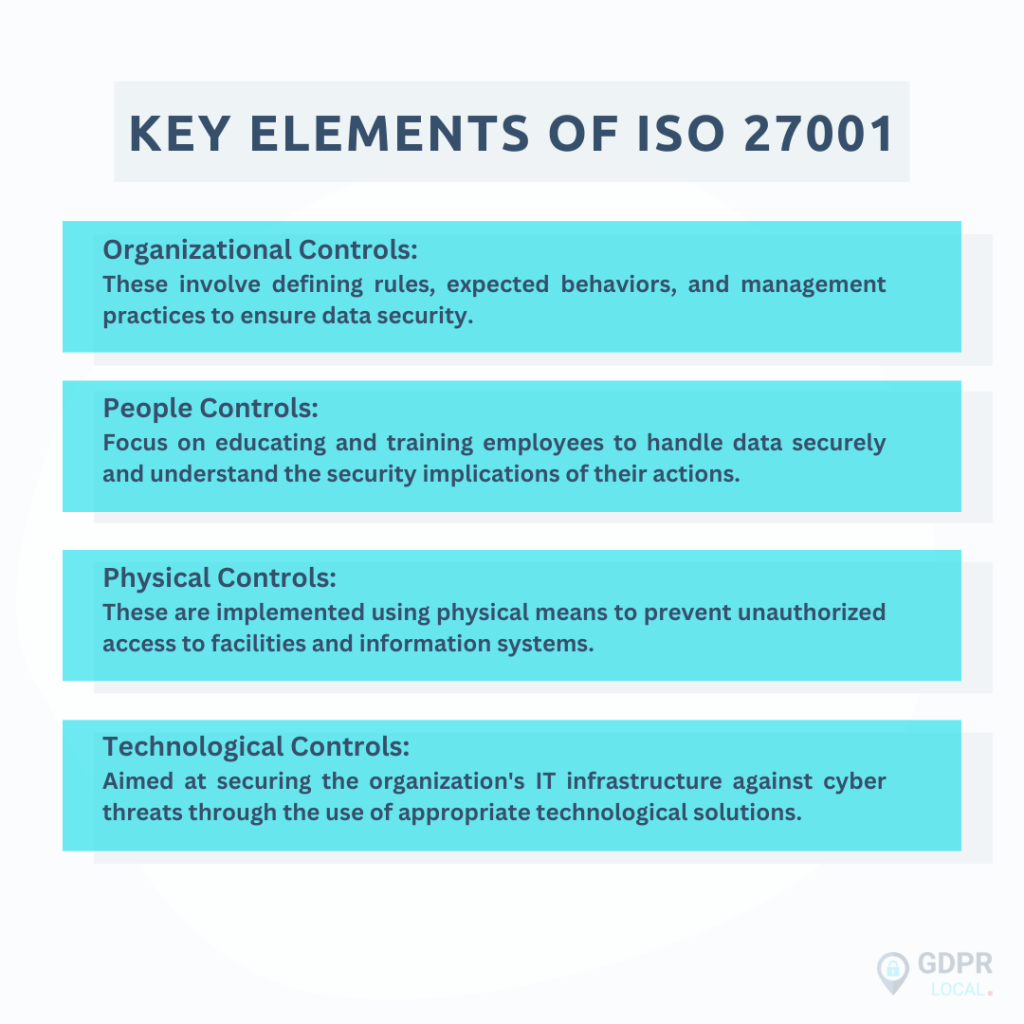
ISO 27001 Controls: A Comprehensive Step-by-Step Guide
Organisations in today’s world filled with technology require a good information security setup and that’s exactly what the ISO 27001 provides. The ISO 27001 controls are comprehensive policies, procedures, and techniques designed to protect information assets. Understanding and implementing these controls is not just about compliance; it is about building a resilient Information Security Management System (ISMS) that can withstand and adapt to the evolving threats of the digital world.
By outlining the key competencies required for successful implementation and emphasizing the importance of ongoing risk assessment, businesses will have tools needed to achieve and maintain ISO 27001 certification.
The Importance of ISO 27001
What is ISO 27001?
ISO 27001 is recognized as the only auditable international standard that delineates the requirements for an Information Security Management System (ISMS). This framework comprises a set of policies, procedures, and systems designed to manage risks such as cyber-attacks, data leaks, or theft. The standard supports information security management and certification, demonstrating commitment to data protection.
Why is ISO 27001 Important?
It serves as a global benchmark for effective information management and helps organizations protect themselves against potentially costly security breaches. ISO 27001 certification helps organizations protect data, build trust, and minimize risks. Moreover, ISO 27001 certification is increasingly becoming a contractual requirement worldwide, particularly for government and lucrative private contracts, making it a critical standard for global business operations.
Key Elements of ISO 27001
The key elements of ISO 27001 include a set of controls and best practices that guide organizations in protecting their information assets. These controls are categorized into organizational, people, physical, and technological controls, each tailored to address specific security aspects of the organization.

Implementing these controls requires a systematic approach to managing information security risks, tailored to the organization’s specific needs and the evolving digital landscape. This holistic approach ensures that all aspects of information security are addressed, from policy implementation to employee training and system security.
This not only enhances an organization’s security posture but also builds trust with stakeholders and customers, ensuring long-term business success and compliance with relevant regulations.
Preparing for ISO 27001 Implementation
Forming the Implementation Team
The initial step in preparing for ISO 27001 implementation involves appointing a project leader who possesses a comprehensive understanding of information security and the authority to direct a team. This leader will assemble a group, either chosen by senior management or at their discretion, to support the various stages of the implementation. It is crucial to ensure that this team represents all organizational levels and areas, reflecting the diverse needs and perspectives necessary for a comprehensive ISMS.
Establishing ISMS Scope
Defining the scope of the Information Security Management System (ISMS) is critical and should encompass all information that the organization aims to protect, regardless of its location or the manner in which it is accessed. Organizations must ensure that sensitive information stored in all physical and digital locations, including servers, cloud storage, and portable devices. The scope document should be concise and may include diagrams of physical locations or organizational charts to aid in understanding and auditing. It’s also advised to integrate this scope document with other essential documents like the Information Security Policy for streamlined management.
Gap Analysis and Risk Assessment
Conducting a gap analysis is a strategic approach to identify the current state of the organization’s ISMS compared to the ISO 27001 standards. This analysis involves a detailed review of existing security practices against the standard’s requirements, identifying areas of non-compliance and opportunities for improvement. Following the gap analysis, a thorough risk assessment is necessary to understand the potential threats to information security and to determine the appropriate management strategies. This assessment should consider the impacts, threats, and vulnerabilities to prioritize risks and decide on the necessary controls to mitigate them. Implementing these controls effectively is essential for preparing the organization for ISO 27001 certification.
This preparation not only aids in achieving compliance but also enhances the overall security posture, ensuring that sensitive information is protected against emerging threats.
Step-by-Step Guide to Implement ISO 27001 Controls
Designing and Implementing Controls
When a company starts the implementation of ISO 27001 controls, one begins by understanding the framework provided by the standard. This includes a detailed breakdown of controls across various categories such as organizational, people, physical, and technological controls. For instance, organizational controls involve setting clear rules and management practices, while technological controls focus on securing IT infrastructure against cyber threats.
Each control addresses specific security aspects within the organization, ensuring a holistic approach to information security. It’s crucial to tailor these controls to the organization’s specific needs and the evolving digital landscape, thereby enhancing the overall security posture.
Developing Policies and Procedures
The backbone of a good Information Security Management System (ISMS) lies in its policies and procedures. ISO 27001 requires the creation of modular policies that can be easily managed and updated. Organizations should draft policies covering everything from acceptable use to password management and ensure effective communication to all stakeholders.
Developing these policies involves a clear understanding of the ISO 27001 standard and its requirements. Organizations should not only draft policies but also ensure they are practical, applicable, and aligned with their objectives. Regular reviews and updates are necessary to adapt to changing conditions and to maintain compliance.
Training Employees
A critical aspect of implementing ISO 27001 controls is ensuring that all employees understand their roles and responsibilities concerning information security. This is achieved through comprehensive security awareness training, which should be an ongoing effort rather than a one-time event.
Training programs should include a variety of educational tools such as e-learning modules, videos, and quizzes to engage employees and reinforce learning. Moreover, it’s important to assess the effectiveness of these training programs regularly, using tools like surveys or quizzes, to ensure that employees are not only compliant but also confident in their ability to uphold the organization’s information security standards.
Audit and Certification Process
Preparation for the Audit
Organizations must ensure that all necessary documentation is in place, including policies, procedures, and risk assessment reports. A thorough internal audit should be conducted to identify and address any serious non-conformity issues, ensuring that the organization is primed for the external audit. This stage also involves preparing employees for audit interviews and ensuring that all evidential records are easily accessible.
Stage 1 and Stage 2 Audits
| Stage 1: Documentation Review | This initial audit assesses the organization’s ISMS documentation against ISO 27001 standards. It aims to identify any gaps and ensure that the ISMS is well-designed from a documentation standpoint. This stage is crucial for understanding the organization’s readiness for the more rigorous Stage 2 audit. |
Stage 2: Certification Audit | Often referred to as the Compliance Audit, this stage involves a deeper evaluation of the ISMS’s implementation and effectiveness. Auditors verify that the policies and procedures documented in Stage 1 are being effectively implemented and that they function as intended to mitigate risks. This audit is more extensive and includes on-site verification or detailed remote assessments. |
Surveillance and Re-certification Audits
Following certification, organizations enter a cycle of continuous improvement and regular audits to maintain their ISO 27001 certification:
Surveillance Audits: Conducted annually, these audits are essential to ensure that the ISMS continues to operate effectively and complies with ISO 27001 standards. They manage the system, perform key processes, and address previous audit findings and non-conformities.
Re-certification Audit: Occurring typically in the third year of the certification cycle, this audit is akin to the Stage 2 audit. It evaluates the entire ISMS afresh to ensure that the organization continues to meet the ISO 27001 requirements in light of any changes or evolutions within the business landscape.
Conclusion
It becomes evident that ISO 27001 transcends mere compliance; it is a catalyst for transformation that imbues information security into the very DNA of an organization. The strategic steps, from forming a dedicated implementation team to enduring the thorough audit process, underscore a commitment to excellence and continuous improvement in the digital defense arena. Such endeavors empower organizations not only to mitigate risks but to elevate their credibility and competitiveness in the global marketplace. Therefore, the pursuit of ISO 27001 certification is not just a goal but a voyage towards a resilient and reputable future in the digital expanse.
FAQs
What are the steps involved in implementing ISO 27001?
To implement ISO 27001, follow these key steps:
1. Define your objectives.
2. Establish the scope of the implementation.
3. Create an inventory of your assets.
4. Set up a risk management framework.
5. Identify and score potential risks.
6. Develop risk treatment plans.
7. Ensure these plans align with Annex A controls.
8. Document the process comprehensively.
Can you list the 11 new controls added to ISO 27001?
The 11 new controls introduced in ISO 27001 include:
1. Threat Intelligence (5.7)
2. Information Security for Use of Cloud Services (5.23)
3. ICT Readiness for Business Continuity (5.30)
4. Physical Security Monitoring (7.4)
5. Configuration Management (8.9)
6. Information Deletion (8.10)
What are the 14 domains covered by ISO 27001 controls?
ISO 27001 controls are grouped into 14 domains according to Annex A:
1. Information security policies
2. Organisation of information security
3. Human resource security
4. Asset management
5. Access control
6. Cryptography
7. Physical and environmental security
8. Operations security
What are the six phases of the ISO 27001 certification process?
The ISO 27001 certification process includes the following six phases:
1. Create a comprehensive project plan.
2. Define the scope of your Information Security Management System (ISMS).
3. Conduct a risk assessment and perform a gap analysis.
4. Develop and implement relevant policies and controls.
5. Train all employees.
6. Document and gather evidence for certification purposes.